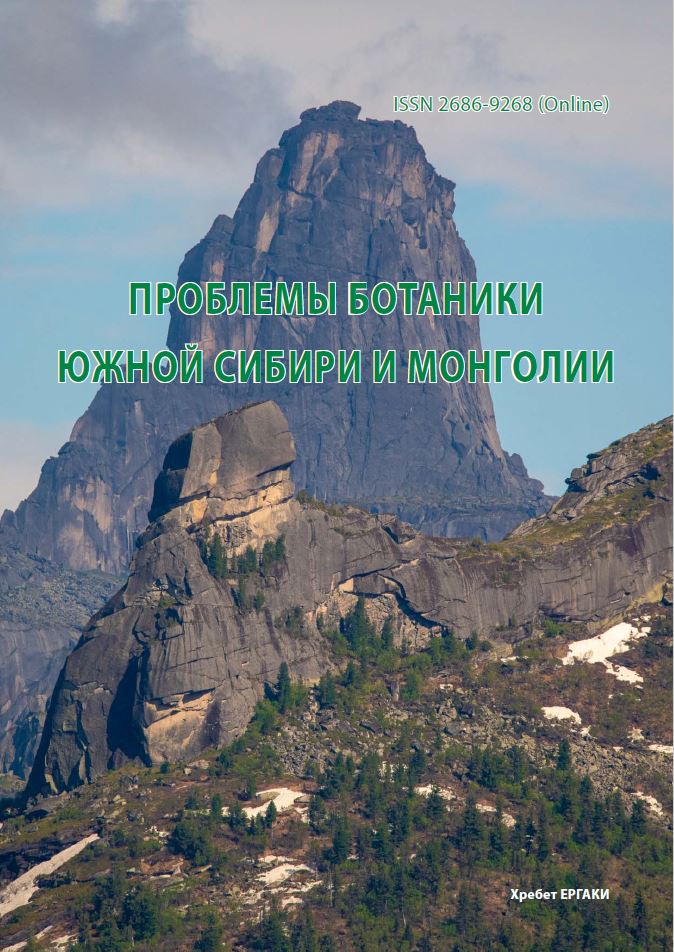The influence of anthropogenic factors on the morphological features of the leaf apparatus of the balsamic poplar (Populus balsamifera L.)
УДК 58*02:630*181:625*77
Abstract
The use of a promising culture of balsamic poplar in the 1950-1970s post-war years in the landscaping of Siberian cities became widespread in squares, parks, lawns along the road network and in urban forests. At the time of the creation of such landscaping facilities, the conditions of their growth did not have significant differences. To date, with the development of motorization, the use of reagents for the maintenance of the road network and the conduct of acaricide treatments in squares and parks, a significant difference has formed in the growing conditions of balsamic poplar crops. Biomonitoring of the state of the environment was carried out at three fundamentally different sites in Novosibirsk. Evaluation of the fluctuating asymmetry of balsamic poplar leaves showed that ordinary plantings along the road network are characterized by a high deviation from the stability of development. Forest crops of balsamic poplar in urban forests are characterized by the presence of deviations from the stability of development. The best indicators were obtained for balsamic poplar plantings in landscape groups in the park - the presence of a weak deviation from the stability of development. The best indicators were obtained for balsamic poplar plantings in landscape groups in the park - the presence of a violation of the stability of development. To date, 50-70-year-old balsamic poplar crops grown on the territory of the megalopolis are characterized by varying degrees of disturbance or deviation from the stability of development. They can be arranged according to the stability reduction scale in the following order: landscape groups in the park, forest crops in urban forests and ordinary planting on lawns along the road network.
Downloads
Metrics
References
Алексеев В. А. Диагностика жизненного состояния деревьев и древостоев // Лесоведение, 1989. - № 4. - С. 51 57.
Бакулин В. Т. Идентификация естественных клонов тополя черного по морфологическим признакам листьев и фенологии // Лесоведение, 2009. - № 2. - С. 41-46.
Баранов С. Г., Зыков И. Е., Федорова Л. В. Изучение внутривидовой изменчивости листьев липы мелколистной (Tilia cordata Mill.) на основе билатеральной асимметрии листовых пластин // Вестник Томского государственного университета. Биология, 2015. - № 2(30). - С. 134-145.
Захаров В. М. Здоровье среды: методика оценки / ред. А. С. Баранов, В. И. Борисов и др. - М.: Центр экологической политики России, 2000. - 68 с.
Корона В. В., Васильев А. Г. Строение и изменчивость листьев растений: основы модульной теории. 2-е изд., испр. и доп. - Екатеринбург: ИЭРиЖ УрО РАН, 2007. - 280 с.
Лесной кодекс Российской Федерации от 04.12.2006 N 200-ФЗ (ред. от 30.12.2021) (с изм. и доп., вступ. в силу с 01.03.2022).
Наумова А. А., Стрельцов А. Б. Методика оценки степени флуктуирующей асимметрии листовых пластинок на примере березы повислой (бородавчатой) (Betula pendula Roth.) // Научно-образовательный журнал для студентов и преподавателей «StudNet», 2020. - № 3. - С. 303-311.
Об утверждении Методических рекомендаций по выполнению оценки качества среды по состоянию живых существ: Распоряжение Росэкологии РФ от 16 октября 2003 г. - № 460-р. URL: https://docs.cntd.ru/document/901879474.
Приказ Госстроя РФ от 15.12.99 N 153 об утверждении Правил создания, охраны и содержания зеленых насаждений в городах Российской Федерации.
Протасова М. В., Белова Т. А. Оценка состояния окружающей среды по показателям флуктурирующей асимметрии листьев древесных растений // Электронный научный журнал Курского государственного университета, 2018. - № 3(19). - С. 17-24.



